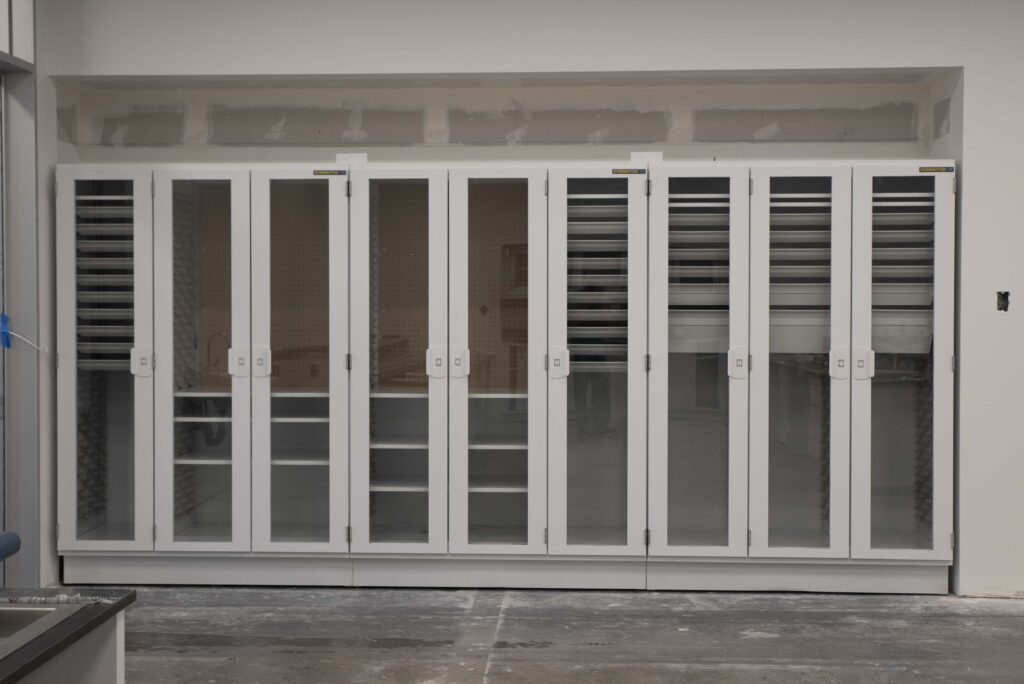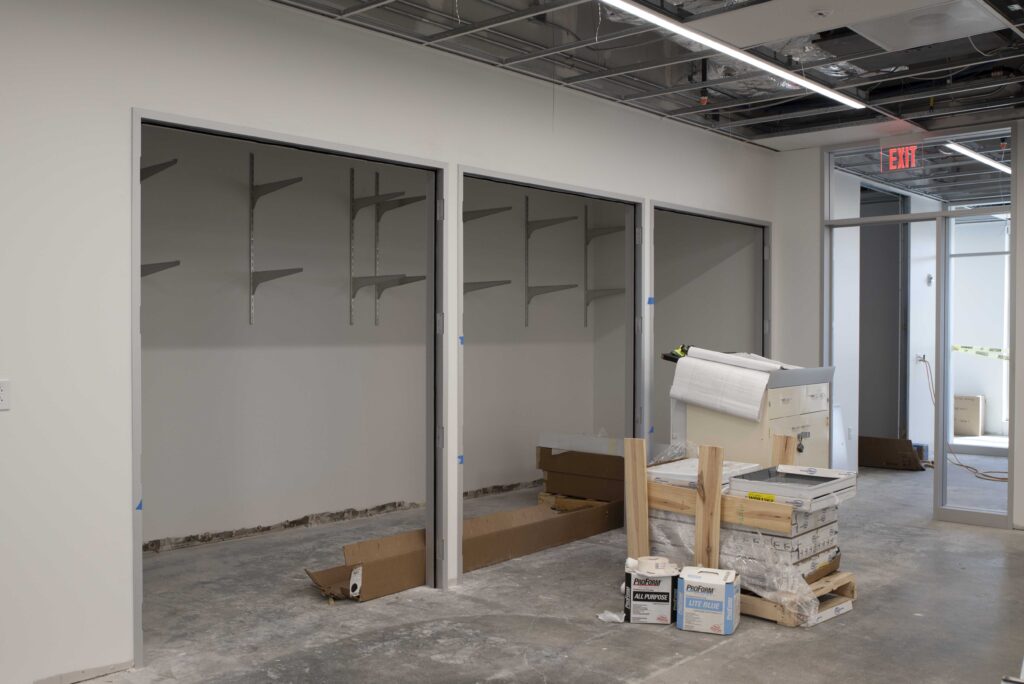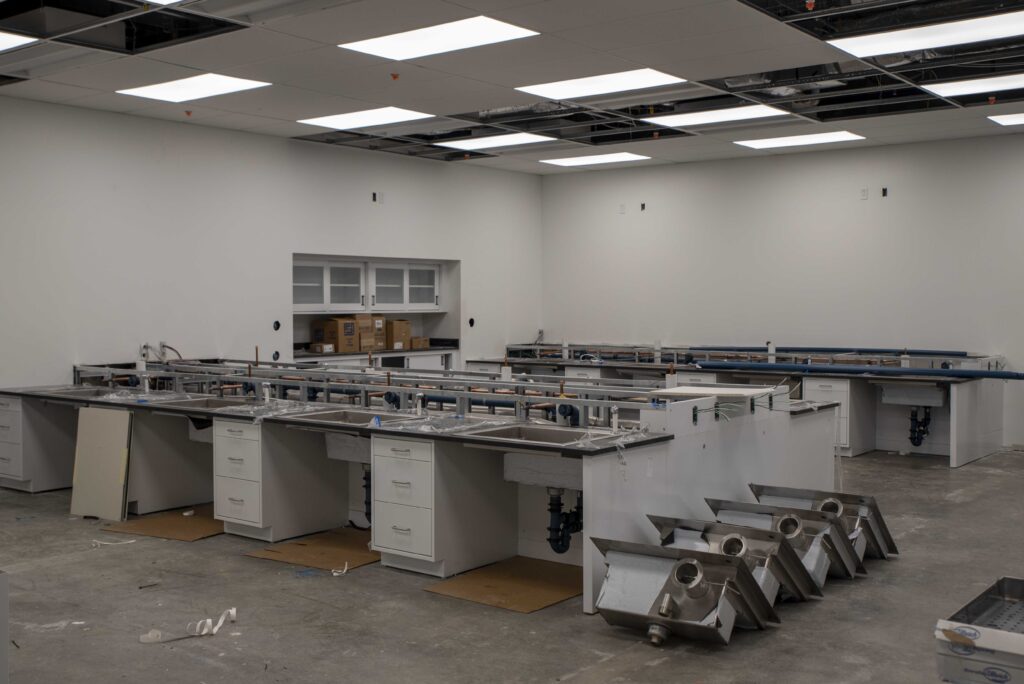A new surgical simulation lab is taking shape quickly on the sixth floor of Farrell Learning and Teaching Center on the medical school campus of Washington University in St. Louis.
The multi-disciplinary lab provides a state-of-the-art platform for hands-on education of surgical trainees in otolaryngology, neurosurgery and ophthalmology. The new facility will replace the current lab which must close to allow a planned full renovation of McMillan Hospital.

At just over 6200 square feet, the new space is about 30% larger than the current lab. The number of individual workstations has increased from 14 to 16, but the most dramatic change is the addition of an open workspace with four ceiling-mounted operating room lights and surgical microscopes to accommodate procedures requiring torso or full cadaver specimens.

According to lab manager Brian Faddis, the improvements also include many that are not so visible, such as improved control over water pressure and ventilation and a dramatic increase in storage space.
“The lab has been copied by a number of institutions across the country that have learned from our experience,” he said. “We’re fortunate to now get a second chance to make some needed improvements.”
WashU Project Manager Paul Duell, who oversaw completion of the first lab, is again serving in that role for the new build. HKW Architects led by Kristin Moomey has provided a bright new concept in the design and planning for the facility, and United Construction is serving as general contractor for demolition and construction.
Lindburg Professor and Chair Craig Buchman, MD, is excited by the opportunities the new site will offer.
“We are pleased to expand our surgical simulation opportunities for medical students, residents, fellows and faculty,” he said. “This lab keeps us at the forefront of surgical education and allows our trainees to become proficient in state-of-the-art procedures in a rich learning environment.”
The project is on schedule to have existing equipment moved the latter part of May, with the new facility fully open by mid-June.
